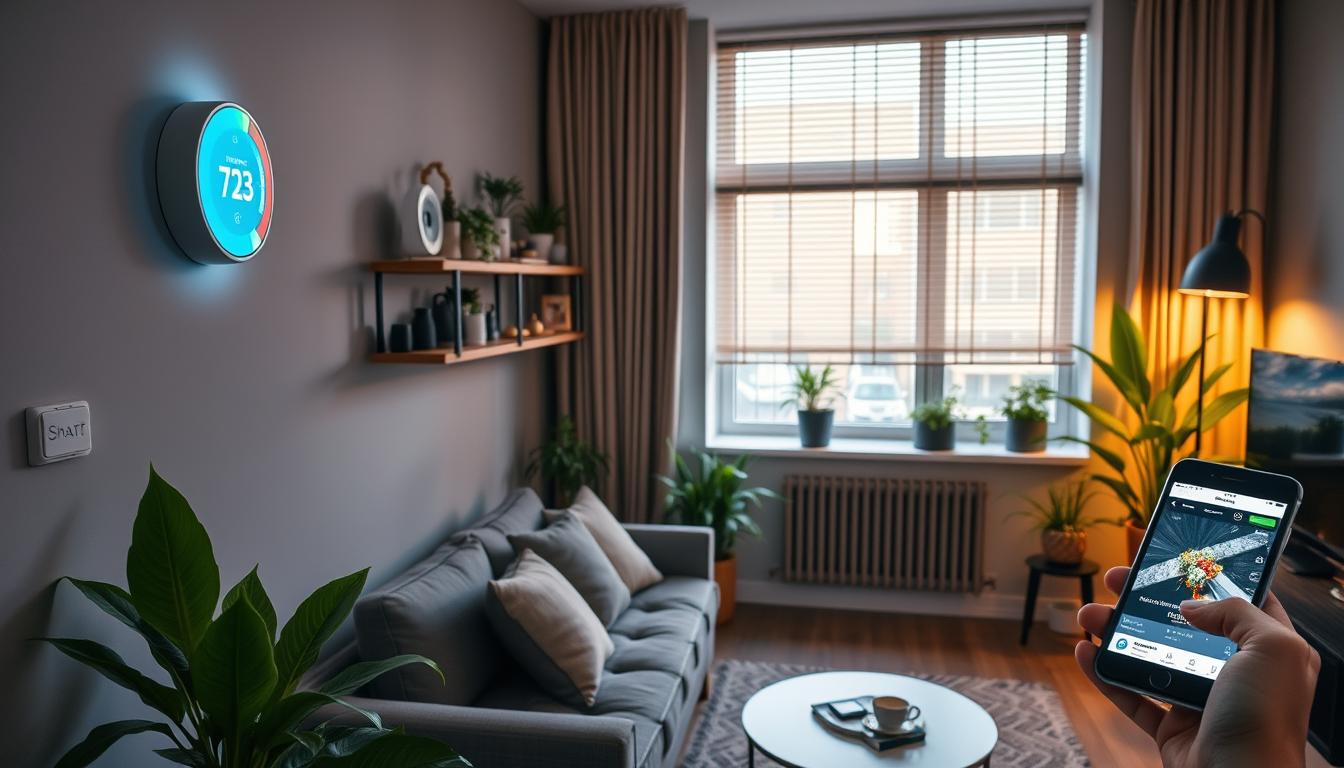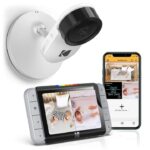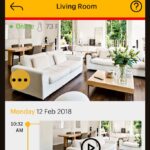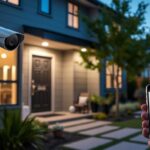More and more people want to turn their homes into smart, automated spaces. But, setting up a smart home can be tricky. It can lead to frustration, waste of money, and unexpected problems. We’ll look at the common mistakes to avoid for a smooth smart home setup.
Don’t get lost in YouTube videos for smart home tips. Also, be careful not to buy cheap devices that might not work well. Knowing these pitfalls helps you set up your smart home right. This way, you save time and money, and enjoy your connected home.
Contents
Smart Home Fundamentals: A Beginner’s Guide
Starting a smart home journey is exciting. It can make your life easier, more efficient, and safer. A smart home uses devices and automation to manage your home better. Knowing the basics of smart home tech is key to creating a system that fits your needs.
What Makes a Home “Smart”?
A smart home uses technology to control and monitor your home easily. You can use voice commands, adjust lights and temperature, and check on security. With smart tech, your home can adapt to your life with just a few taps or voice commands.
Essential Components of Smart Home Systems
- Smart Speakers: These devices, like Amazon Echo, Google Home, and Apple HomePod, manage your smart home. They let you control devices with your voice and do many tasks, from playing music to setting reminders.
- Smart Thermostats: Thermostats like Nest or Ecobee learn your temperature likes. They adjust your home’s climate to save energy and keep you comfortable.
- Smart Lighting: Smart bulbs and fixtures change based on your schedule or if you’re home. They make your home safer and look better.
- Smart Security Systems: Features like smart locks, cameras, and sensors protect your home. They also let you check on your home from anywhere.
Benefits of Smart Home Technology
Smart home tech brings many benefits to your daily life. Some key advantages are:
- Energy Savings: Smart thermostats and lights adjust to save energy. This can lower your bills.
- Improved Security: Smart locks and cameras add protection for your home and family.
- Increased Convenience: Voice commands and remote access make controlling your home easy. This simplifies daily tasks and improves your life.
Starting your smart home journey is exciting. Knowing the basics helps you create a home that fits your needs. Smart home tech brings convenience, efficiency, and security to your life.
| Smart Home Component | Average Cost | Key Features |
|---|---|---|
| Smart Speaker | $60 – $600 | Voice control, home automation, virtual assistant |
| Smart Thermostat | $150 – $250 | Automated temperature adjustment, energy efficiency |
| Smart Lighting | $30 – $50 per bulb | Remote control, scheduling, customizable brightness |
| Smart Security System | $200 – $500 | Integrated locks, cameras, motion sensors, remote monitoring |
The YouTube Rabbit Hole Trap
Starting with smart home projects can lead to too much YouTube watching. This platform is great for advice, but it can also overwhelm you. Watching endless reviews and comparisons can make the project feel too big and tiring.
A study found that 63% of smartphone users have tried to cut down on usage. But, only half of them felt they succeeded. With smart home tech on the rise, people spend a lot of time on their phones. In 2022, Americans spent nearly five hours a day on mobile devices.
This can lead to trouble, like not being able to focus. Our attention is limited, and every minute on screens is gone forever. Smartphones have also changed how we see ourselves. Most of what we learn comes from algorithms that grab our emotions.
To avoid getting stuck in YouTube, know what you need for your smart home. Don’t get lost in too many reviews. Plan, research what’s key, and start doing it. This way, you can set up your smart home without getting overwhelmed.
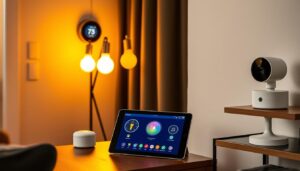
“The attention of individuals is a zero-sum game, with every moment spent on digital devices being a nonrenewable resource.”
Mistakes to Avoid When Setting Up Your First Smart Home
The smart home revolution is changing how we live. It’s important to know the common mistakes that can make setup hard. These include making your system too complicated and ignoring security.
Overcomplicating Your Setup
It’s tempting to add lots of smart gadgets to your home. But, start with just a few key devices. Then, you can add more as you go. Choosing cheaper products can mean you’ll have to replace them more often. This can cost you more in the long run. Pick devices that are durable and work well with what you already have.
Neglecting Security Measures
Smart home tech is convenient but also brings new security risks. Make sure to use strong, unique passwords for your Wi-Fi and devices. Use two-factor authentication when you can, and keep your devices’ software up to date. If you don’t secure your smart home, hackers can get in. This puts your privacy and safety at risk.
Ignoring Compatibility Issues
Not all smart devices work together well. Check if a device will work with what you already have before buying it. Many devices are made to work together, but ignoring this can cause problems. Think about your living situation too. Rental agreements or moving might affect your smart home setup.
Avoiding these mistakes can help you create a smart home that improves your life. Focus on quality, make sure devices work together, and take a careful approach. This way, you’ll have a smart home that’s both secure and functional.
| Mistake | Potential Impact |
|---|---|
| Choosing Cost Over Quality | Cheaper smart home products often require replacing sooner, making upfront reduced costs less economical. |
| Neglecting Product Compatibility | Smart home manufacturers engineer products to work with other brands for streamlined user experiences. Overlooking compatibility can lead to disappointment. |
| Ignoring Housing Situation Constraints | Considerations like rental agreements or potential future relocation should be factored in when selecting smart home equipment. |
| Failing to Ensure Full Functionality | Some smart products require additional components for complete functionality. Overlooking necessary accessories can result in operational issues. |
| Underestimating Wi-Fi Network Capabilities | Smart devices rely on your home’s Wi-Fi network; assessing your network’s capacity is crucial to avoid connectivity problems and slowdowns. |
The Perils of Budget Smart Devices
Setting up your home with smart tech can make you want to save money. But, cheap smart devices often hide risks that can cost more later. These risks include poor performance and security issues, which can ruin the benefits of smart home tech.
One big risk of cheap devices is their weak security. They might not have good protection, making them easy targets for hackers. This could let hackers into your home network and steal your data. It’s better to spend more on safe, reliable smart home products.
Also, cheap devices often don’t work well, have bugs, and don’t last long. Saving money upfront might not be worth it if you have to keep buying new ones. Using cheap smart home devices can also make your smart home system hard to use and full of problems.
To keep your smart home safe and working well, choose products from trusted brands. Spending a bit more on quality devices means you’ll get a smart home that works smoothly and lasts a long time.
| Cheap Smart Devices | Quality Smart Devices |
|---|---|
| Vulnerable to hacking and security breaches | Robust security measures and regular software updates |
| Limited functionality and frequent glitches | Reliable performance and seamless integration |
| Shorter lifespan, requiring constant replacement | Durable construction and long-term usability |
“Investing in quality smart home products from reputable brands can provide better reliability, security, and overall user experience.”
Smart Home Network and Connectivity Considerations
A strong network is key for a smart home to work well. It’s important to make sure your Wi-Fi is set up right for your smart devices. This helps them work their best and keeps connectivity problems away.
Experts say to put routers and Wi-Fi extenders in smart spots. This makes sure your whole home gets a good signal. It helps avoid weak spots and keeps your signal strong.
Wi-Fi Network Optimization
When you set up your smart home, check your Wi-Fi’s bandwidth and coverage. Smart devices can use a lot of network resources, especially when many are connected at once. A good router that can handle lots of devices is key for a smooth smart home experience.
Bandwidth Management Tips
Managing your smart home’s bandwidth is important. Think about how much bandwidth each device needs and how many you have. Too many devices can slow down your network.
Experts say choose smart devices that are versatile and high-quality. This makes your home simpler and your network happier.
Router Selection Guidelines
When picking a router, make sure it can handle all your devices. Mesh Wi-Fi systems or Wi-Fi extenders are great for covering your whole home. They get rid of dead spots and keep your signal strong.
Also, think about getting smart speakers. They make controlling your home with your voice easier and more convenient.
